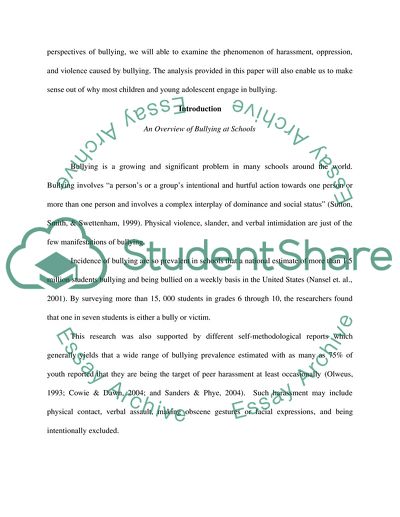Cite this document
(Bullying: Revealing theHiddenFaceof SchoolViolence Research Paper, n.d.)
Bullying: Revealing theHiddenFaceof SchoolViolence Research Paper. Retrieved from https://studentshare.org/social-science/1753165-bullying-causes-school-violence
Bullying: Revealing theHiddenFaceof SchoolViolence Research Paper. Retrieved from https://studentshare.org/social-science/1753165-bullying-causes-school-violence
(Bullying: Revealing TheHiddenFaceof SchoolViolence Research Paper)
Bullying: Revealing TheHiddenFaceof SchoolViolence Research Paper. https://studentshare.org/social-science/1753165-bullying-causes-school-violence.
Bullying: Revealing TheHiddenFaceof SchoolViolence Research Paper. https://studentshare.org/social-science/1753165-bullying-causes-school-violence.
“Bullying: Revealing TheHiddenFaceof SchoolViolence Research Paper”, n.d. https://studentshare.org/social-science/1753165-bullying-causes-school-violence.


